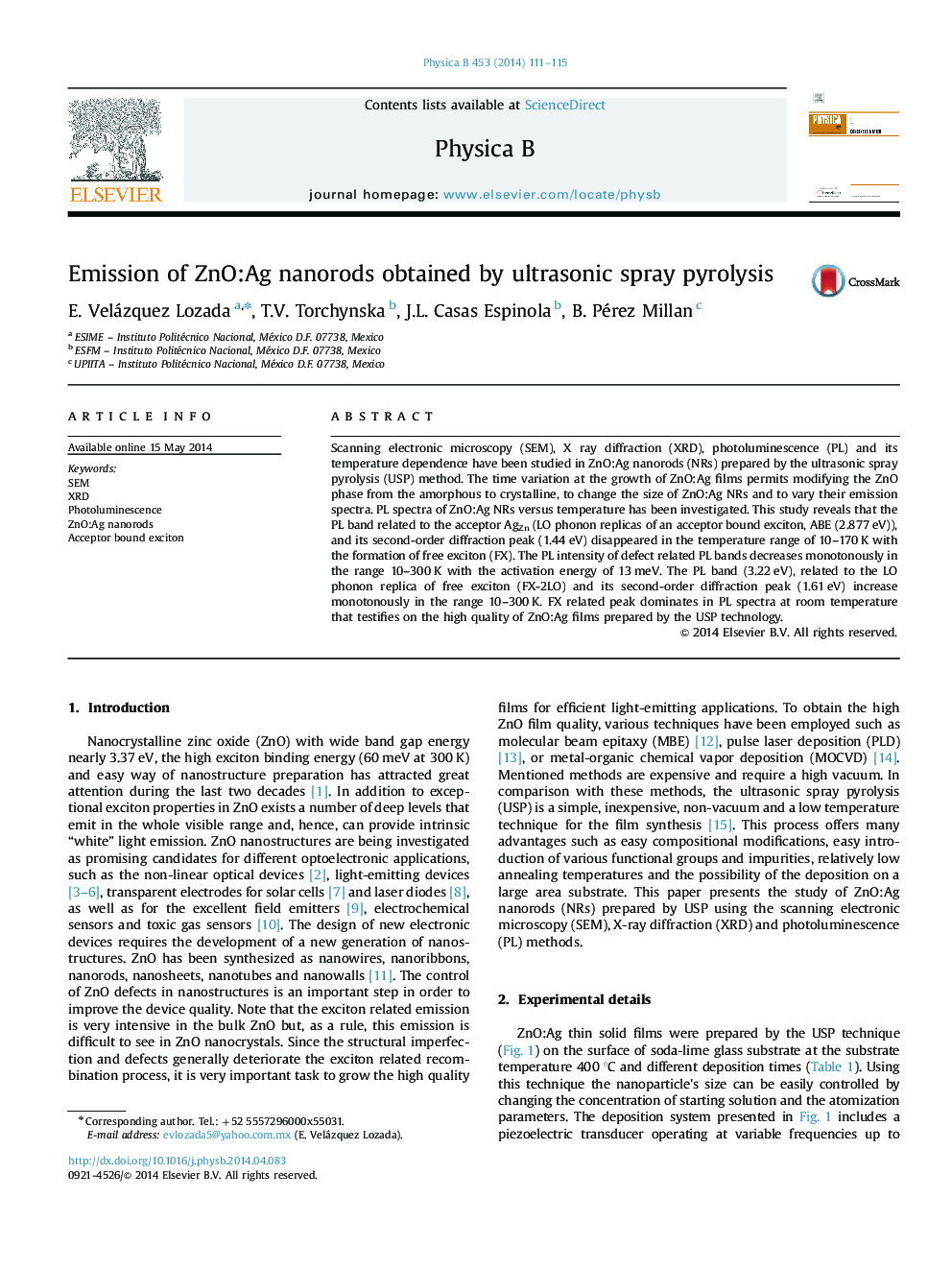| Article ID | Journal | Published Year | Pages | File Type |
|---|---|---|---|---|
| 1809392 | Physica B: Condensed Matter | 2014 | 5 Pages |
Scanning electronic microscopy (SEM), X ray diffraction (XRD), photoluminescence (PL) and its temperature dependence have been studied in ZnO:Ag nanorods (NRs) prepared by the ultrasonic spray pyrolysis (USP) method. The time variation at the growth of ZnO:Ag films permits modifying the ZnO phase from the amorphous to crystalline, to change the size of ZnO:Ag NRs and to vary their emission spectra. PL spectra of ZnO:Ag NRs versus temperature has been investigated. This study reveals that the PL band related to the acceptor AgZn (LO phonon replicas of an acceptor bound exciton, ABE (2.877 eV)), and its second-order diffraction peak (1.44 eV) disappeared in the temperature range of 10–170 K with the formation of free exciton (FX). The PL intensity of defect related PL bands decreases monotonously in the range 10–300 K with the activation energy of 13 meV. The PL band (3.22 eV), related to the LO phonon replica of free exciton (FX-2LO) and its second-order diffraction peak (1.61 eV) increase monotonously in the range 10–300 K. FX related peak dominates in PL spectra at room temperature that testifies on the high quality of ZnO:Ag films prepared by the USP technology.
